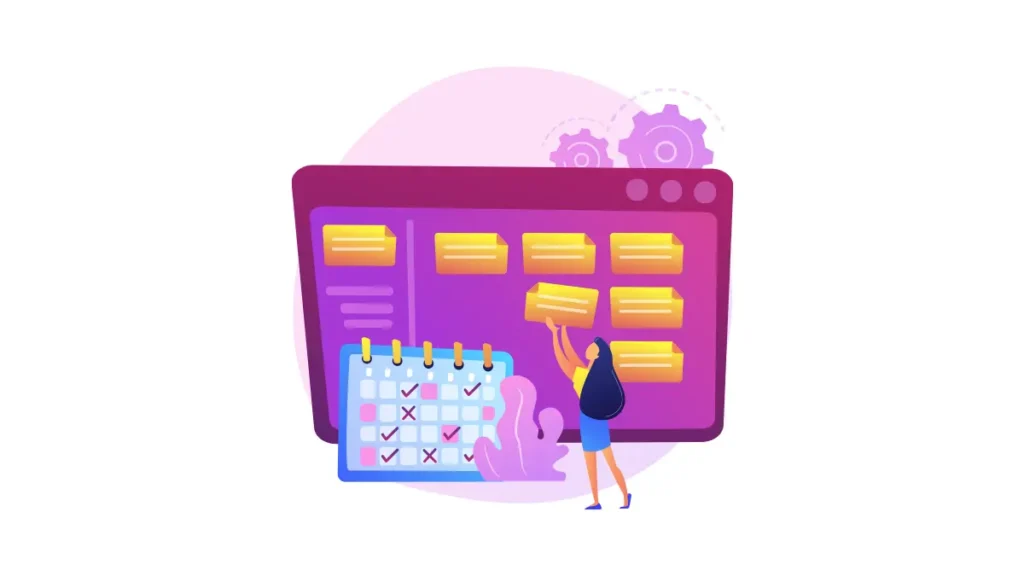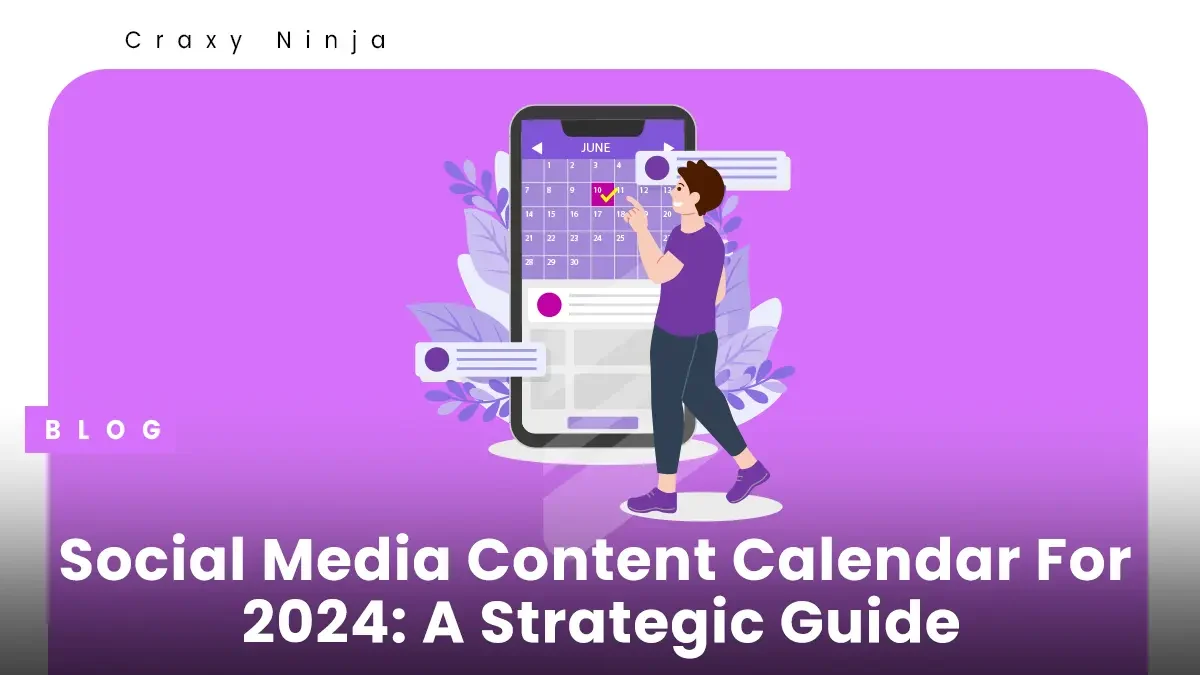Trends evolve at the speed of a double-tap in the social media world, having a well-thought-out content calendar is your roadmap to success. As we step into 2024, the importance of strategic content planning on platforms like Instagram, Facebook, Twitter, and beyond cannot be overstated. Let’s unravel the intricacies of creating a social media content calendar that not only keeps you organized but also elevates your brand’s online presence.
Why You Need a Social Media Content Calendar
Before diving into the nitty-gritty of creating a content calendar, let’s understand why it’s a game-changer for your social media strategy:

Consistency is Key
A consistent online presence is crucial for building and maintaining an engaged audience. A content calendar ensures that your posts are distributed evenly across days and weeks, preventing content droughts and flooding.

Strategic Planning
With a content calendar, you have the liberty to plan your content strategically. From product launches to seasonal promotions, you can align your posts with your broader marketing goals.

Efficient Resource Management
Knowing what to post and when reduces the last-minute scramble for content creation. It allows you to allocate resources efficiently, whether it’s design, copywriting, or collaboration efforts.

Adaptability and Agility
While a content calendar provides structure, it’s not set in stone. It can be adjusted to accommodate real-time events, trends, or shifts in your marketing strategy, ensuring your brand remains agile and responsive.

Steps to Create a Social Media Content Calendar
Now that we’ve established the “why,” let’s delve into the “how.” Follow these steps to craft an effective social media content calendar for the year 2024:

Set Clear Objectives and Goals
Begin by defining your social media objectives for 2024. Are you aiming to increase brand awareness, drive website traffic, or boost engagement? Your goals will shape the content you create and the platforms you prioritize.

Know Your Audience Inside Out
Understanding your target audience is pivotal. What content resonates with them? When are they most active on social media? Use analytics from previous years and industry insights to tailor your content to your audience’s preferences.

Choose the Right Platforms
Not all social media platforms are created equal. Each has its unique audience, content format, and engagement style. Select platforms based on your target demographic and the nature of your content.

Content Categories and Themes
Diversify your content by defining categories and themes. These can range from educational content and behind-the-scenes glimpses to user-generated content and promotional posts. This ensures a varied and interesting feed for your audience.

Create a Content Calendar Template
Your content calendar should be visually intuitive and easy to use. Create a template that includes columns for date, time, content type, caption, hashtags, and any other relevant information. Tools like Google Sheets or Excel work well for this.

Identify Key Dates and Events
Highlight key dates and events relevant to your brand or industry. This includes product launches, holidays, industry conferences, and awareness days. Plan content around these dates to maximize visibility and engagement.

Balance Promotional and Non-Promotional Content
Avoid bombarding your audience with promotional content. Strike a balance between promotional and non-promotional posts to keep your feed interesting and valuable. Consider the 80/20 rule – 80% valuable, non-promotional content and 20% promotional.

Utilize Content Buckets
Organize your content into “buckets” or categories. This ensures a mix of content types and prevents monotony. For instance, you could have buckets for product highlights, customer testimonials, tips and tricks, and industry news.

Plan Ahead for Campaigns
If you have upcoming campaigns or product launches, plan your content around them. Build anticipation with teaser posts, launch-day content, and follow-up posts to sustain momentum.

Incorporate User-Generated Content (UGC)
Leverage the power of your community by incorporating UGC into your content calendar. This not only provides social proof but also strengthens your relationship with your audience.

Assign Responsibilities
Clearly define roles and responsibilities within your team. Who is responsible for content creation, scheduling, monitoring engagement, and analyzing metrics? A well-organized team ensures the smooth execution of your social media strategy.

Review and Analyze Performance
Regularly review your social media analytics to gauge the performance of your content. What worked well? What needs improvement? Use these insights to refine your strategy and optimize future content.

Stay Informed About Trends
The social media landscape is ever-evolving. Stay informed about emerging trends, algorithm changes, and new features on different platforms. This knowledge will help you adapt your content strategy accordingly.

Embrace Video Content
Video continues to dominate social media. Incorporate a variety of video content, including tutorials, behind-the-scenes footage, and live streams, into your calendar to keep your audience engaged.

Test and Iterate
Don’t be afraid to experiment. Test different content formats, posting times, and engagement strategies. Use A/B testing to identify what resonates best with your audience and be willing to iterate based on the results.

Creating a social media content calendar for 2024 is not just about planning; it’s about strategic storytelling, audience connection, and adaptability.
As you embark on this journey, remember that the most successful content calendars are living documents – evolving, responsive, and aligned with the pulse of your audience. With the right blend of creativity and strategy, your social media presence in 2024 is poised to be a compelling narrative that captivates and engages.
Happy planning!








